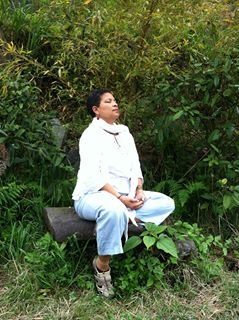
Acupeeps & Acupunks, unite!!!!
Today - October 24th - marks the day that we recognize, honor & celebrate National Acupuncture Day. Truth be told, for me every day is Acupuncture Day, but I prefer to call it “Oriental Medicine Day” because the Western world needs to know our medicine is more than just #acupuncture.
“Acupuncture” is often used as an umbrella term for the practice of “Oriental Medicine”, Traditional Chinese Medicine, or Classical Chinese Medicine, but it also includes the use of other modalities in combination with acupuncture needling, such as Moxibustion, cupping, Gua Sha, Tui Na, Chinese herbal therapy, Qi Gong or Tai Chi, or Chinese dietary therapy. Besides traditional Chinese acupuncture, other therapies I may use during your session may include: Japanese acupuncture, auricular therapy (Ear acupuncture), Acupuncture Point Injection Therapy, hand & scalp acupuncture, E-Stim (electroacupuncture), acupressure, ear seeding, or Homeopathy. Personally,
I have used (and still continue to use) acupuncture and Oriental Medicine therapies to treat my low back pain after years of ICU nursing, a recent wicked case of lateral epicondylitis (aka “tennis elbow”), migraines, “Personal Summers” aka “power surge” secondary to hormones gone wild, weight loss, stress, sleepless nights and monkey-mind….. I could go on. I wouldn't be such an advocate if I didn't personally believe in the efficacy of our medicine, or experience its healing benefits myself. The most frequent questions I get related to acupuncture are:
I’m scared of needles! Does acupuncture hurt? What can I expect to feel?
This is the 1st question I usually get after “what is acupuncture?” Our clients all have varying degrees of sensitivity and pain threshold, but in my experience, no one has said that acupuncture is painful. Instead they describe it as an awareness of a sensation comparable to heaviness, dullness or tingling around the point, indicating enhanced energy flow. Mostly all will agree that they do feel a wonderful difference in their mood and general feeling of well-being within 5 minutes of the needles being in (I'm happy to say I feel it the minute the 1st needle goes in!). You have to realize the size of an acupuncture needle is much smaller than the tip of a pin so if hypodermic needles have left you scared of an acupuncture session, fear no more - the needles are gently placed by the expert hands of your acupuncture physician. Safety is our concern and as such, when we needle, we do so observing anatomical structures as well as principles of Clean Needle Technique.
What is “Qi”?
Like the blood that flows through our arteries and veins, Qi (pronounced “Chee”), is that invisible Essence of our life, and has been called by other names such as “Prana”, “Life Force” or “Vital Energy”. It flows in and around us and is found in every living thing. When stress and tension knots up our muscles, for example, our tissues aren't able to get the nutrients they need and we feel this as pain, stiffness or soreness. Through acupuncture needling or any of the modalities incorporated by your acupuncture physician, we are able to unblock that stuck energy to restore your body’s innate abilities to self-heal through the release of naturally occurring chemicals and hormones such as endorphins.
What is an acupuncturist’s training?
The requirements to become a licensed acupuncturist includes a minimum of 3-4 years post-graduate studies in acupuncture at a school that is recognized by the Accreditation Commission for Acupuncture and Oriental Medicine (ACAOM). Licensed acupuncturists have more than 2,000 hours of education and training, including 1,000 hours of clinical experience plus hundreds of hours of hands-on clinical training and observation hours.
If you would like to find out more about Oriental Medicine and how it may support your health, please feel free to navigate through this website, drop me a line ([email protected]), or contact your nearest and most favorite acupuncturist. We are all here to be of service to you. In the meantime, here are some links that you may find helpful if you need further information about acupuncture and Oriental Medicine:
Links:
a) World Health Organization’s list of diseases and disorders that can be treated with acupuncture:
http://apps.who.int/medicinedocs/en/d/Js4926e/5.html
b) NCCAOM:
www.nccaom.com (National Certification Commission for Acupuncture and Oriental Medicine)
c) Finding a licensed acupuncturist in your state:
http://www.nccaom.org/find-a-nccaom-certified-practitioner
http://www.doh.state.fl.us/mqa/acupunct/acu_lic_req.html
d) Information on research and acupuncture:
* NIH: http://nccam.nih.gov/health/acupuncture/
* WHO: http://www.who.int/topics/traditional_medicine/en/index.html
To your health!
Audrey Steele, L.Ac
Acupuncture Physician – www.Acupuncture4YourHealth.com
“All that man needs for health and healing has been provided by God in nature; the challenge of science is to find it” (Paracelsus: 1493-1541).

